
在上篇文章中,有同学评论想要“网络安装微软原盘镜像”的教程,恰好我也会,所以本次教程为windows部署服务+自动应答,内容以实用为主,不涉及细节讲解,因windows的复杂性,详细内容建议直接到微软文档库查看。
本文涉及的软件、工具:
VMware虚拟机
windows2016服务器镜像
windows10 20H2镜像
Windows 评估和部署工具包 (Windows ADK)
UltraISO镜像编辑工具
本文分为三部分,第一部分为windows10自动应答的制作,第二部分为WDS部署,第三部分为安装实战。
一、windows10自动应答文件的制作
所谓应答,即在安装过程中需要我们手动输入的选项,自动应答可以省略安装过程,在批量安装中可以节约时间。
如果我们需要使用U盘安装且自动应答,那么需要将应答文件封装进镜像里;如果我们使用WDS网络安装,则应答文件并不需要封装进镜像,直接放入WDS服务器对应目录即可。
1、下载并安装win10ADK,从微软官方下载即可
https://docs.microsoft.com/zh-cn/windows-hardware/get-started/adk-install
因为我们只需要制作自动应答文件,因此只需要勾选“部署工具”即可

2、制作自动应答文件,因为选项颇多,我这里直接放我的应答文件供大家使用,另存为“AutoUnattend.xml”,然后用“windows系统影像管理器”编辑即可,我的应答文件为win10家庭版,只有安装前的“版本选择”和“磁盘分区”需要手动选择,其他均为自动处理。
<?xml version="1.0" encoding="utf-8"?>
<unattend xmlns="urn:schemas-microsoft-com:unattend">
<settings pass="windowsPE">
<component name="Microsoft-Windows-International-Core-WinPE" processorArchitecture="amd64" publicKeyToken="31bf3856ad364e35" language="neutral" versionScope="nonSxS" xmlns:wcm="http://schemas.microsoft.com/WMIConfig/2002/State" xmlns:xsi="http://www.w3.org/2001/XMLSchema-instance">
<SetupUILanguage>
<UILanguage>zh-CN</UILanguage>
</SetupUILanguage>
<InputLocale>zh-CN</InputLocale>
<SystemLocale>zh-CN</SystemLocale>
<UILanguage>zh-CN</UILanguage>
<UserLocale>zh-CN</UserLocale>
<UILanguageFallback>en-US</UILanguageFallback>
<LayeredDriver>1</LayeredDriver>
</component>
<component name="Microsoft-Windows-Setup" processorArchitecture="amd64" publicKeyToken="31bf3856ad364e35" language="neutral" versionScope="nonSxS" xmlns:wcm="http://schemas.microsoft.com/WMIConfig/2002/State" xmlns:xsi="http://www.w3.org/2001/XMLSchema-instance">
<UserData>
<ProductKey>
<Key>TX9XD-98N7V-6WMQ6-BX7FG-H8Q99</Key>
<WillShowUI>OnError</WillShowUI>
</ProductKey>
<AcceptEula>true</AcceptEula>
<FullName>use</FullName>
<Organization></Organization>
</UserData>
<EnableFirewall>true</EnableFirewall>
<EnableNetwork>true</EnableNetwork>
<Restart>Restart</Restart>
<UseConfigurationSet>false</UseConfigurationSet>
</component>
</settings>
<settings pass="oobeSystem">
<component name="Microsoft-Windows-Shell-Setup" processorArchitecture="amd64" publicKeyToken="31bf3856ad364e35" language="neutral" versionScope="nonSxS" xmlns:wcm="http://schemas.microsoft.com/WMIConfig/2002/State" xmlns:xsi="http://www.w3.org/2001/XMLSchema-instance">
<UserAccounts>
<AdministratorPassword>
<Value>QQBkAG0AaQBuAGkAcwB0AHIAYQB0AG8AcgBQAGEAcwBzAHcAbwByAGQA</Value>
<PlainText>false</PlainText>
</AdministratorPassword>
<LocalAccounts>
<LocalAccount wcm:action="add">
<Password>
<Value>UABhAHMAcwB3AG8AcgBkAA==</Value>
<PlainText>false</PlainText>
</Password>
<DisplayName>Administrator</DisplayName>
<Group>Administrators</Group>
<Name>Administrator</Name>
</LocalAccount>
</LocalAccounts>
</UserAccounts>
<OOBE>
<ProtectYourPC>3</ProtectYourPC>
<HideEULAPage>true</HideEULAPage>
<HideOEMRegistrationScreen>true</HideOEMRegistrationScreen>
<HideOnlineAccountScreens>true</HideOnlineAccountScreens>
<HideWirelessSetupInOOBE>true</HideWirelessSetupInOOBE>
<UnattendEnableRetailDemo>false</UnattendEnableRetailDemo>
<HideLocalAccountScreen>true</HideLocalAccountScreen>
</OOBE>
<TimeZone>China Standard Time</TimeZone>
<AutoLogon>
<Password>
<Value>UABhAHMAcwB3AG8AcgBkAA==</Value>
<PlainText>false</PlainText>
</Password>
<LogonCount>1</LogonCount>
<Enabled>true</Enabled>
<Username>administrator</Username>
</AutoLogon>
</component>
<component name="Microsoft-Windows-International-Core" processorArchitecture="amd64" publicKeyToken="31bf3856ad364e35" language="neutral" versionScope="nonSxS" xmlns:wcm="http://schemas.microsoft.com/WMIConfig/2002/State" xmlns:xsi="http://www.w3.org/2001/XMLSchema-instance">
<SystemLocale>zh-CN</SystemLocale>
<UILanguage>zh-CN</UILanguage>
<UILanguageFallback>en-US</UILanguageFallback>
<UserLocale>zh-CN</UserLocale>
<InputLocale>0804:{81D4E9C9-1D3B-41BC-9E6C-4B40BF79E35E}{F3BA9077-6C7E-11D4-97FA-0080C882687E}</InputLocale>
</component>
</settings>
<settings pass="specialize">
<component name="Microsoft-Windows-Security-SPP-UX" processorArchitecture="amd64" publicKeyToken="31bf3856ad364e35" language="neutral" versionScope="nonSxS" xmlns:wcm="http://schemas.microsoft.com/WMIConfig/2002/State" xmlns:xsi="http://www.w3.org/2001/XMLSchema-instance">
<SkipAutoActivation>true</SkipAutoActivation>
</component>
<component name="Microsoft-Windows-SQMApi" processorArchitecture="amd64" publicKeyToken="31bf3856ad364e35" language="neutral" versionScope="nonSxS" xmlns:wcm="http://schemas.microsoft.com/WMIConfig/2002/State" xmlns:xsi="http://www.w3.org/2001/XMLSchema-instance">
<CEIPEnabled>0</CEIPEnabled>
</component>
<component name="Microsoft-Windows-International-Core" processorArchitecture="amd64" publicKeyToken="31bf3856ad364e35" language="neutral" versionScope="nonSxS" xmlns:wcm="http://schemas.microsoft.com/WMIConfig/2002/State" xmlns:xsi="http://www.w3.org/2001/XMLSchema-instance">
<InputLocale>zh-CN</InputLocale>
<SystemLocale>zh-CN</SystemLocale>
<UILanguage>zh-CN</UILanguage>
<UserLocale>zh-CN</UserLocale>
<UILanguageFallback>en-US</UILanguageFallback>
</component>
<component name="Microsoft-Windows-Shell-Setup" processorArchitecture="amd64" publicKeyToken="31bf3856ad364e35" language="neutral" versionScope="nonSxS" xmlns:wcm="http://schemas.microsoft.com/WMIConfig/2002/State" xmlns:xsi="http://www.w3.org/2001/XMLSchema-instance">
<ComputerName>PC-</ComputerName>
<OEMInformation>
<Manufacturer></Manufacturer>
</OEMInformation>
</component>
</settings>
<cpi:offlineImage cpi:source="wim:c:/users/admin/desktop/install.wim#Windows 10 Home" xmlns:cpi="urn:schemas-microsoft-com:cpi" />
</unattend>
3、合并应答文件到镜像中,用UltraISO打开win10镜像,并将“AutoUnattend.xml”添加到镜像根目录然后另存为,注意左上角是否显示EFI启动,如果不显示则说明UltraISO版本过低,请更换高版本。
至此,自动应答制作完成。
二、WDS部署
WDS(Windows Deployment Services)即Windows部署服务,在企业中能实现各种批量管理功能,但在本文中,仅使用其中的网络批量安装功能。
1、启动windows2016
2、为本地服务器添加角色和功能,勾选Windows部署服务即可
3、添加完成后,界面出现了WDS功能,此时WDS已经启动,我们可以进入WDS并进行设置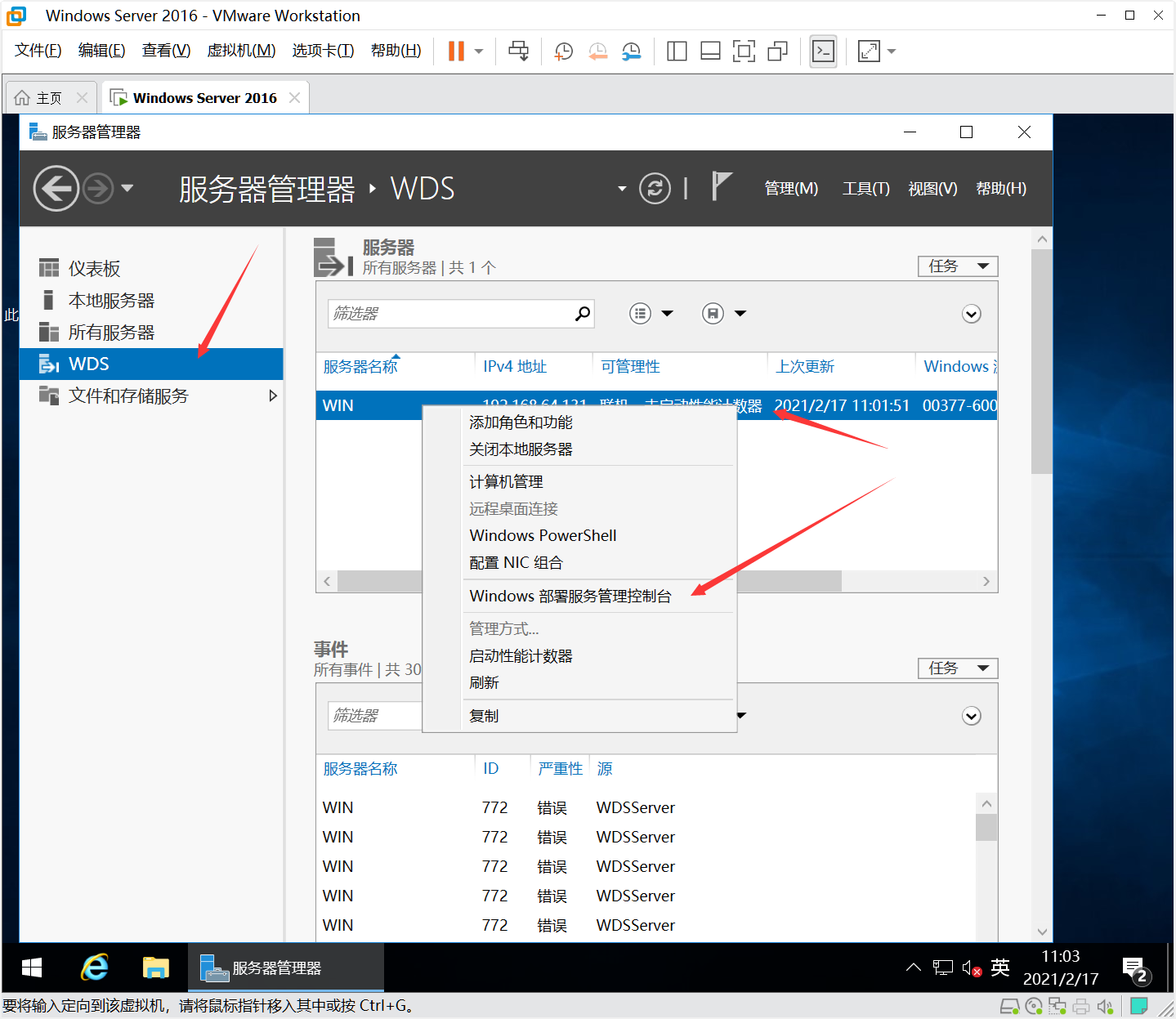
4、在WDS的界面中,我们可以启动关闭服务、设置属性、设置安装映像,设置启动映像等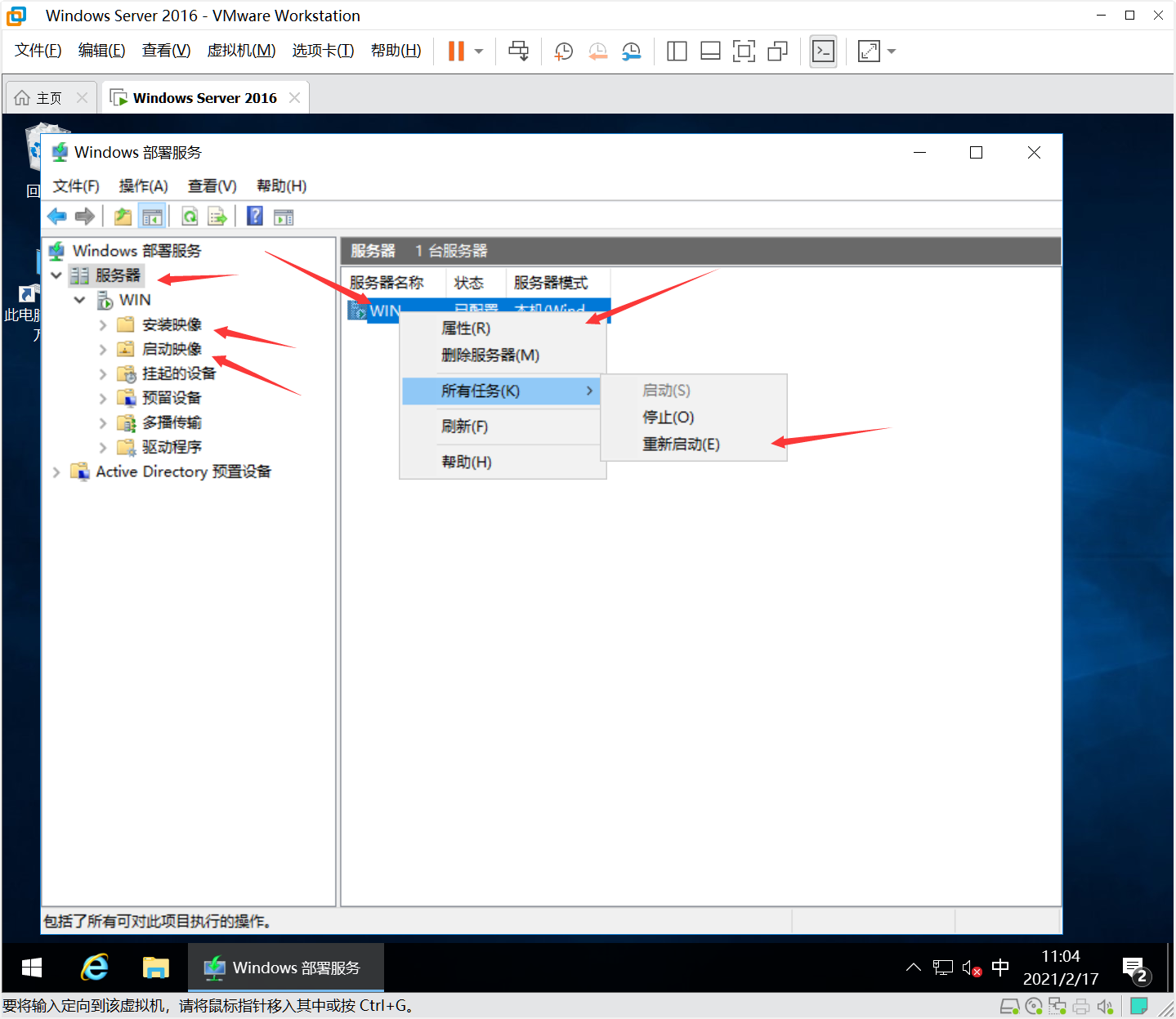
5、添加安装映像install.wim,虚拟机挂载镜像,install.wim位于 镜像\sources目录下,添加即可
6、添加启动映像boot.wim,同样位于 镜像\sources目录下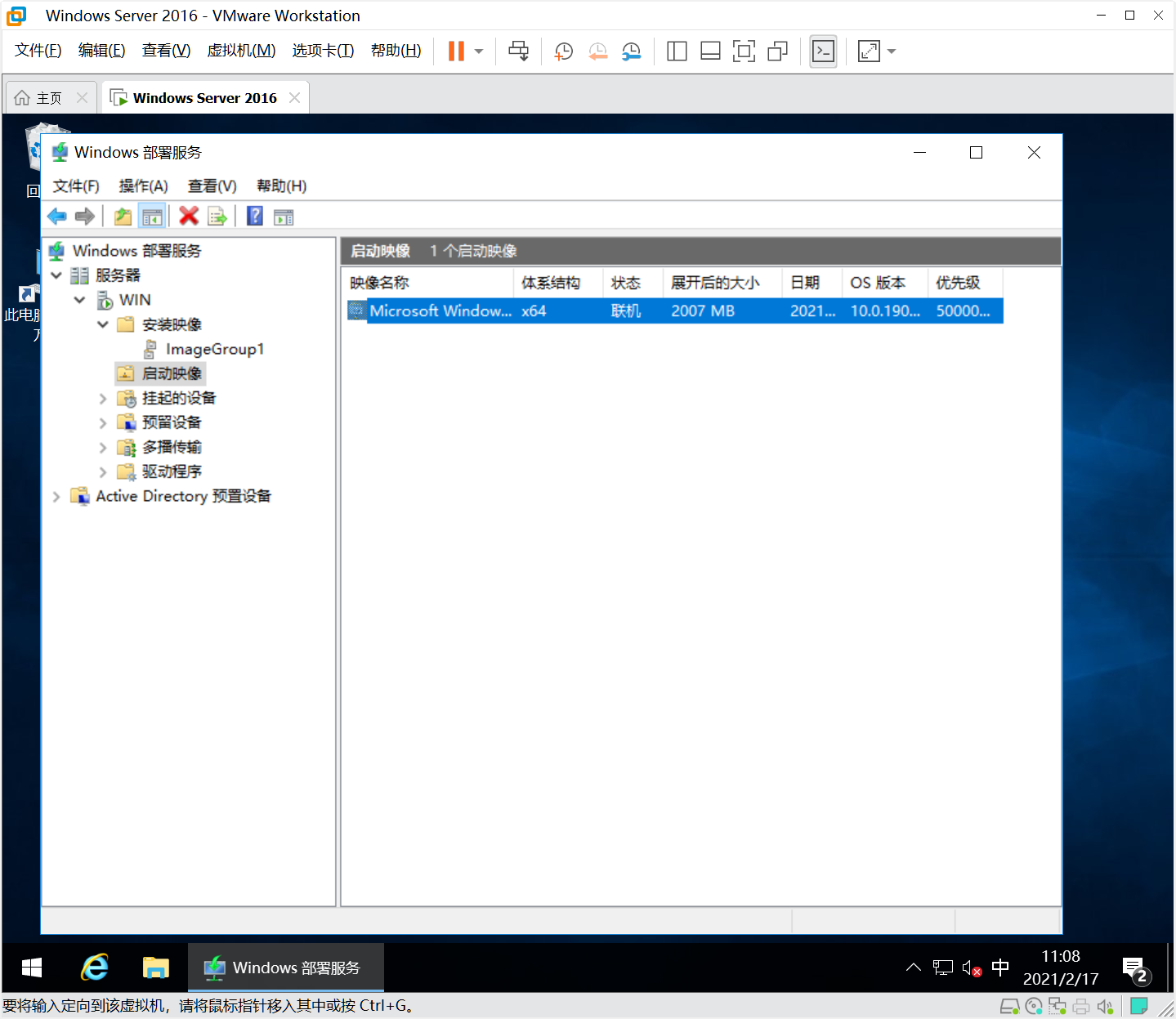
7、设置WDS服务器属性,响应所有客户端计算机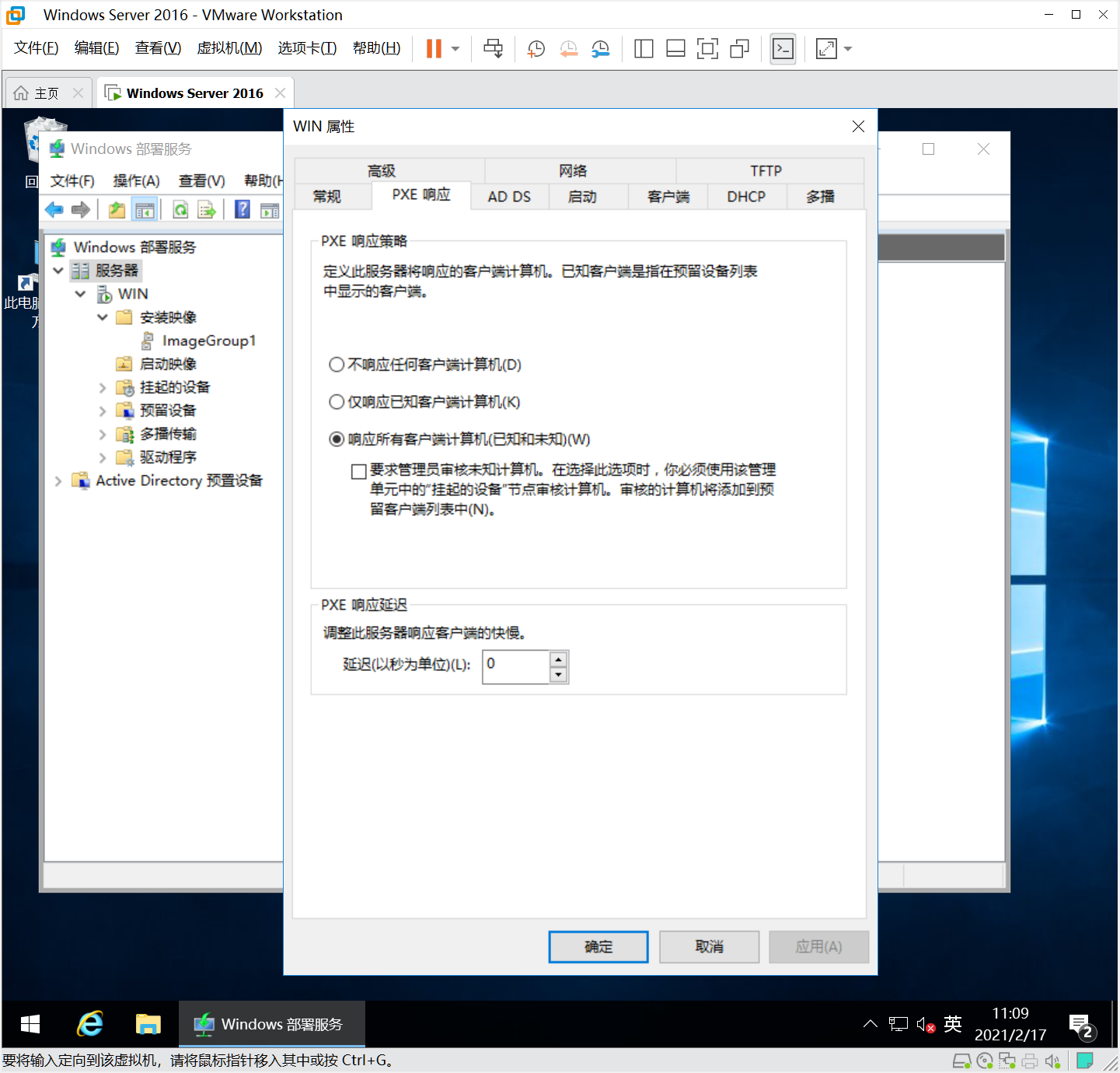
8、设置继续PXE启动,这样可以直接进入安装界面不需要再按回车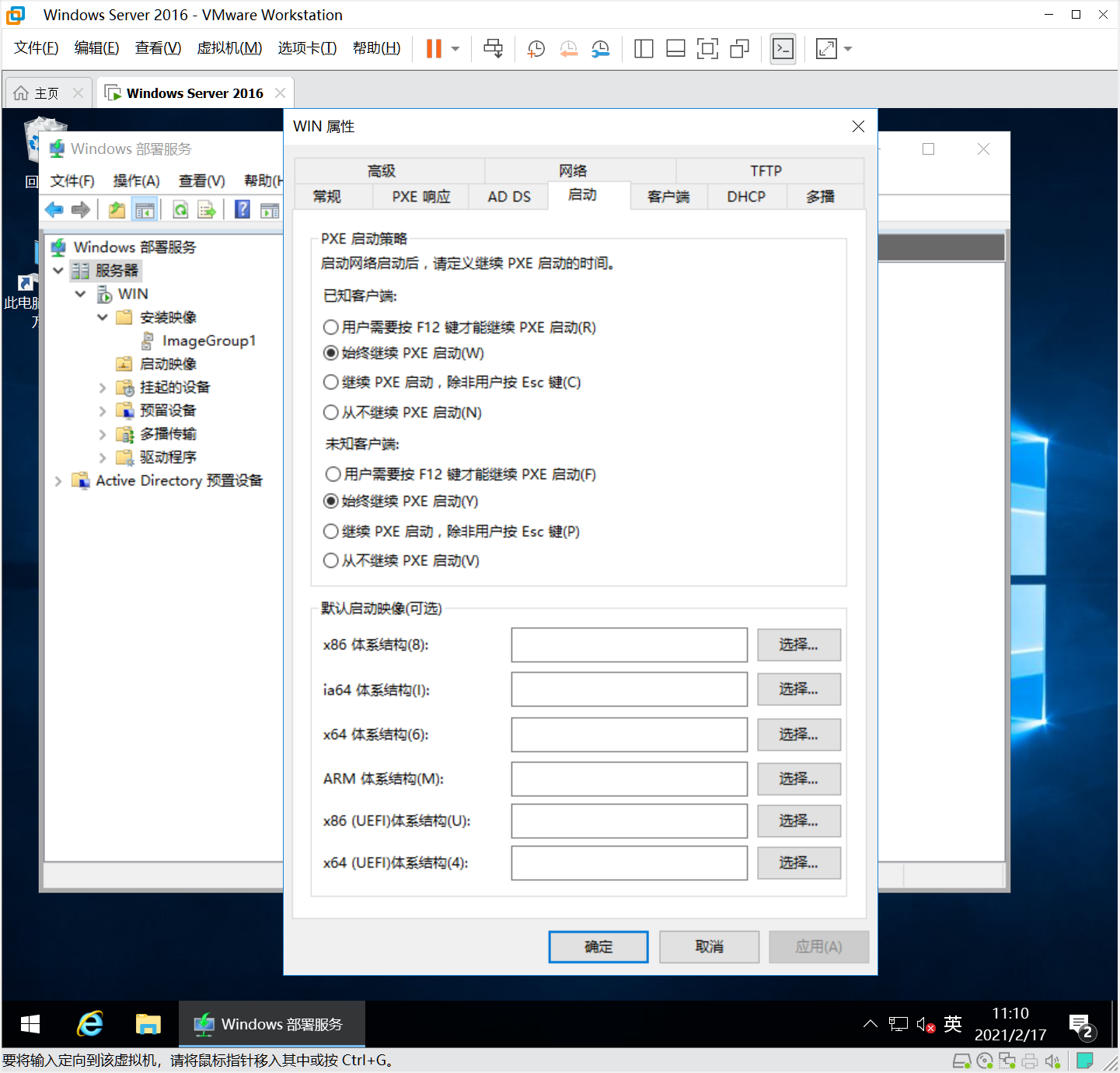
9、将之前的自动应答文件放到C:\RemoteInstall目录下,加载该文件,并设置不加入域,如果保存报错,请先在WDS界面中停用服务,保存后再启用
其他选项无须设置,服务器至此设置完成。
三、安装实战
1、新建空白虚拟机并启动,因为虚拟机无启动文件,自动进入PXE网络启动。
2、启动网络安装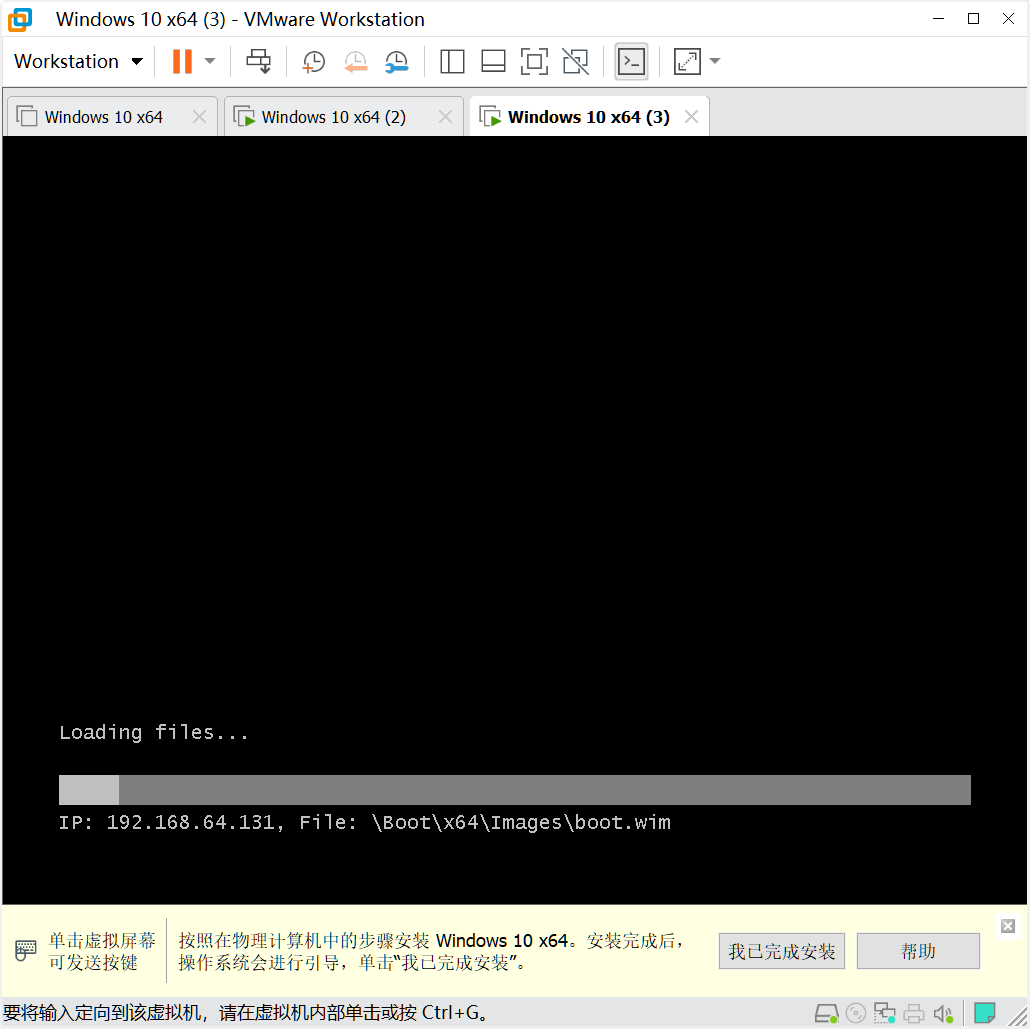
3、下一步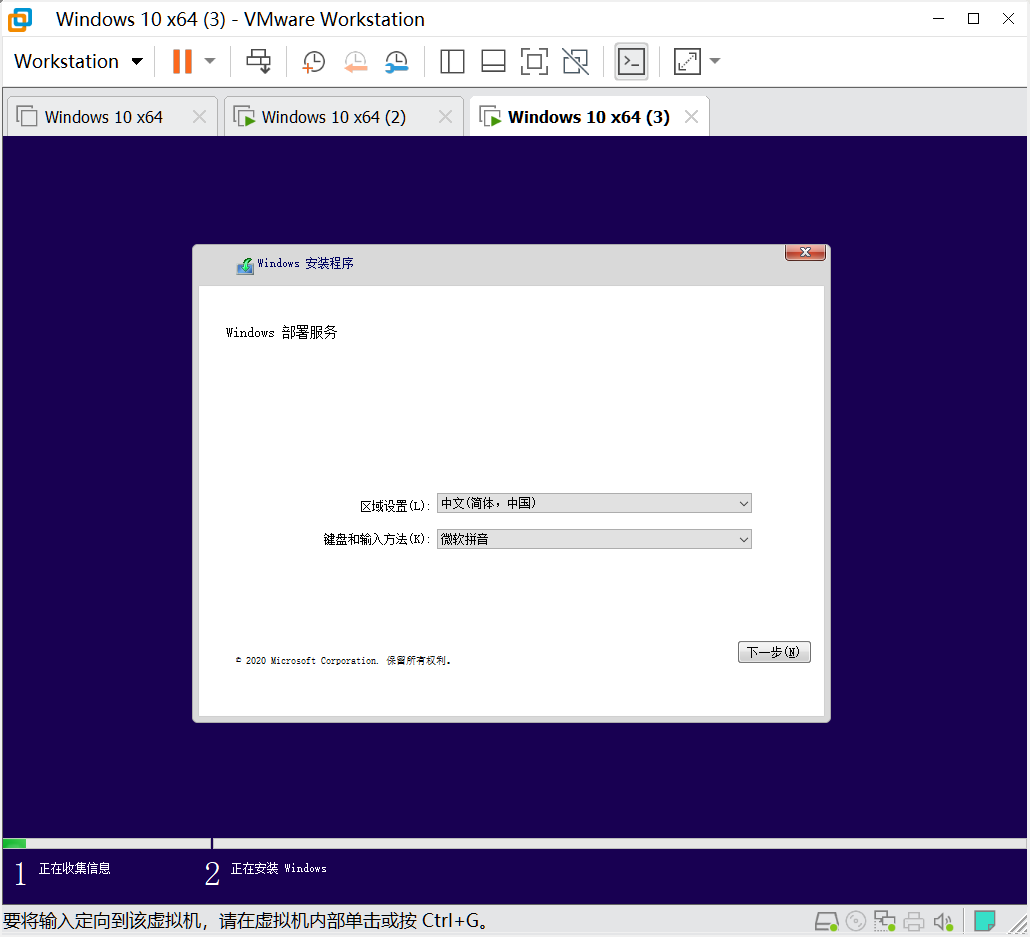
4、提示输入用户名密码,按提示输入服务器的用户名密码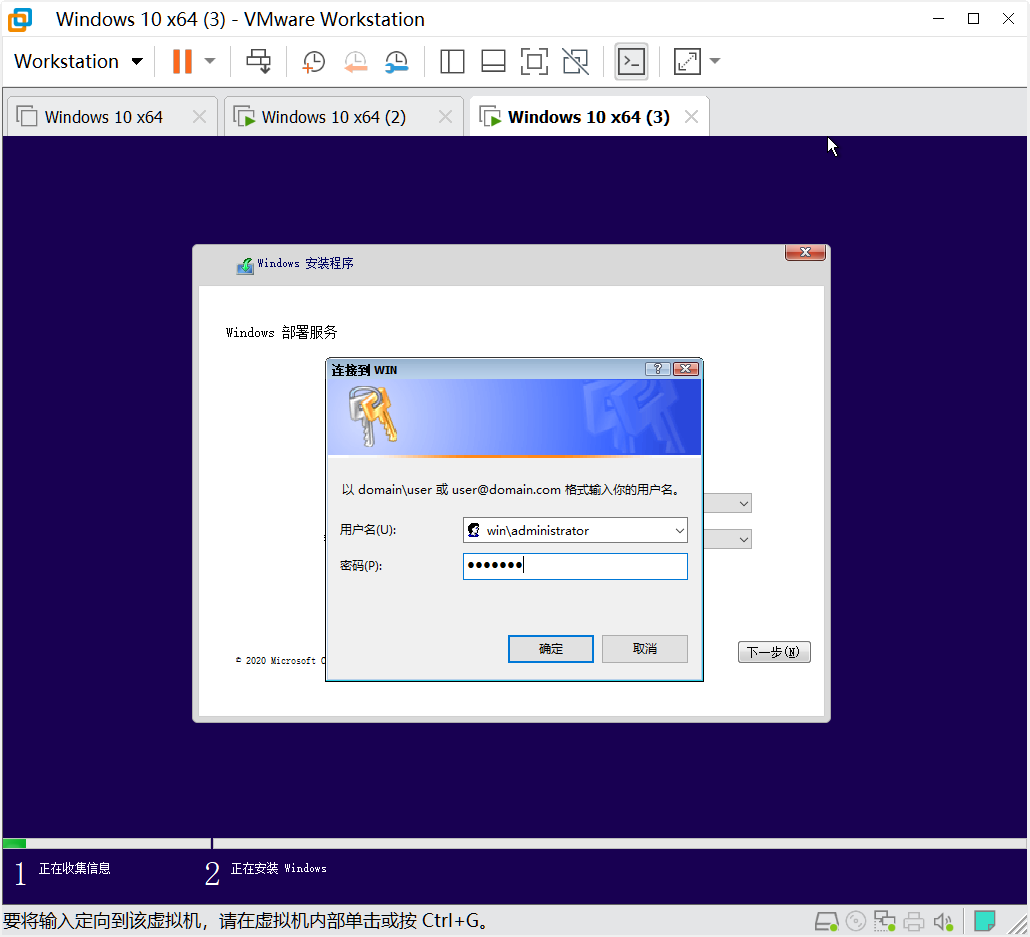
5、网络启动完成,此后步骤与单机安装相同,选择系统版本并分区后,进入全自动过程,直至进入桌面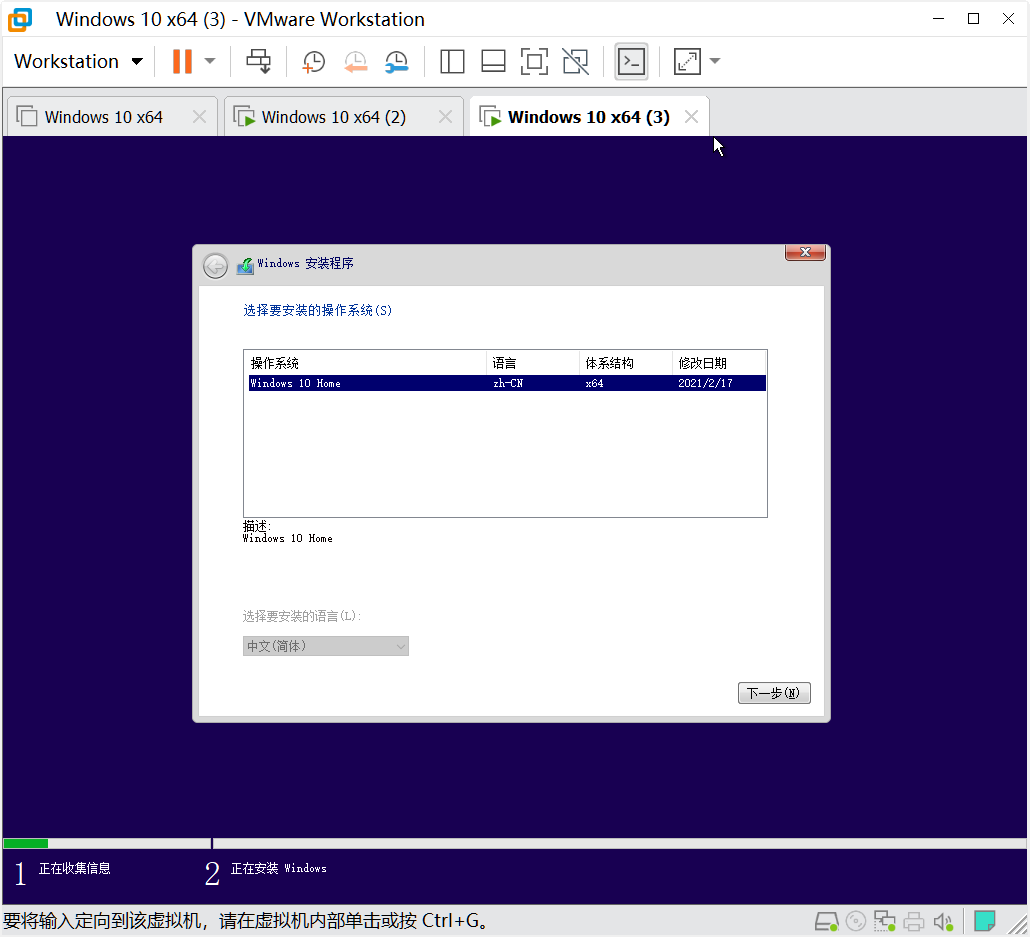

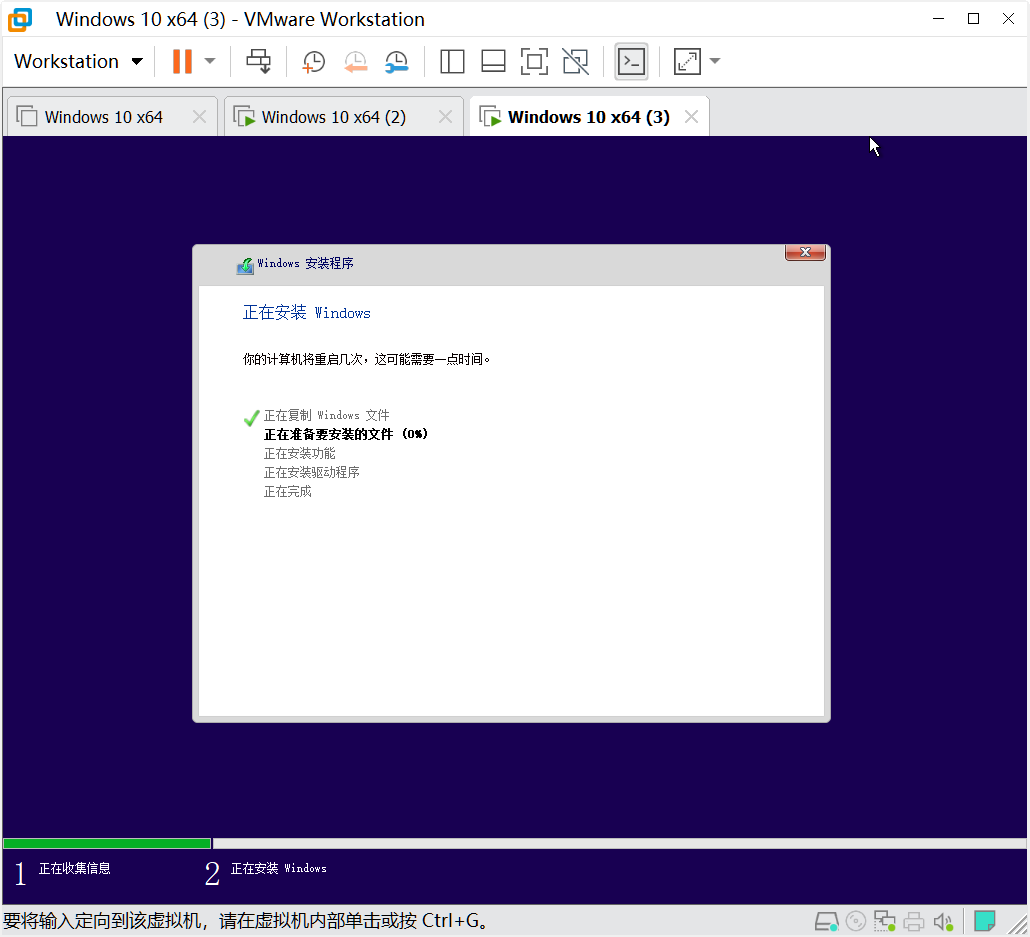

至此,WDS批量安装系统与自动应答的操作我们就学会了,是不是很简单呢~



评论